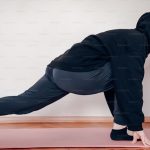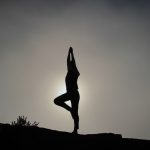Everyone knows someone who has “Horrendous Hamstrings”. But do these muscles deserve the bad press? I think not – and here’s why.
Our Awesome Anatomy
The hamstrings are a wonderful group of muscles that make up the bulk of the back of the thigh. They originate from the sit bone, or ischial tuberosity, deep in the buttock; pass down the back of the thigh and attach to the lower leg just below the knee. Because they travel over the hip and the knee they are able to work both joints at the same time and separately. Here’s how:
Imagine you are lying on your belly and you bend your knee – this is the hamstrings working to flex the knee. Now imagine you haven’t bent your knee and you are lifting the whole leg up off the floor with the knee straight – here the hamstrings are contracting to extend the hip. Then imagine you kept your knee bent while lifting your leg up off the floor. In this position, the hamstrings are flexing the knee and extending the hip at the same time – clever, eh?
But that is not all they can do! The hamstrings control our movement as we move into standing forward folds and stop us from just flopping forwards over our legs. Here the hamstrings are lengthening as they work – this is called “eccentric muscle contraction” and we use it quite a lot in yoga. Ever felt stiff in the back of your thighs the day after a strong practice with lots of vinyasa or sun salutes? It is because you have worked your hamstrings in this particular way every time you folded forwards.
So what if the Hamstrings are tight?
Because of their attachment to the sit bones, the hamstrings have a HUGE influence on our posture. Tight hamstrings pull the pelvis into posterior tilt and tend to flatten the lower back. In effect, tight hamstrings anchor the pelvis in a less than ideal position which can prevent the spine from moving freely. This is not good for spinal health or general wellbeing.
Tight hamstrings can also prevent the knees from straightening fully as we walk and run. Thus they are a potential cause of knee pain too.
Unfortunately our sitting and slouching lifestyle tends to result in short, tight hamstrings. But there’s so much you can do to counteract this.
Why is Yoga so good for Hamstrings?
Happy, healthy hamstrings need to be long enough to allow the spine, pelvis, hips and knee to move freely. They are strong when they contract and shorten in concentric muscle action, and when they lengthen and work eccentrically. Oh, and they need to be fine tuned to work just enough to stabilise our hips and knees without preventing them from moving. This is a big ask. But the great news is that yoga can achieve all this!
Hints for Lengthening
Your yoga teacher may say “lengthen or stretch your hamstrings”, but what you’re really doing is mobilising the whole of the myofascial system that the hamstring muscle sits in. This system runs from the back of the head down the whole of the back, through the buttocks, down the back of the legs all the way to the sole of the foot. The best hamstring lengtheners involve more of this system than just the back of the thigh and many yoga poses do just that.
Any of the forward folds will stretch the whole of the back of the body and ultimately increase mobility and length in the hamstrings. But forward folds with tight hamstrings are difficult! Here’s what you can do:
- Bend those knees. Though is seems counterintuitive, a bend in the knees allows you to keep your back in a less flexed position and tension the hamstrings safely. Good for your back and your hamstrings.
- Use a strap. When your toes seem to be just too far away, even with your knees bent, using a strap will also help you to stretch safely and effectively. Never be afraid to reach for a prop – it can revolutionise your practice.
- The power of reciprocal inhibition. Muscles work in pairs. When one muscle is working, its opposite number has to relax to allow movement. This means that when we are working the front of the thigh, or quadriceps, the hamstrings will automatically relax – they can’t help it. We can use this to our advantage in forward folds by working to tighten the front of the thigh as we ease into the fold. Give it a try – you might just feel your fold deepen.
- Sukha vs dukka. Or comfort vs suffering. When working to increase flexibility, always aim for a mild sensation of stretch that stays the same or eases as you hold the position. Intense stretch or pain actually makes the muscular parts of the myofascial system contract, or shorten, to protect themselves. Not quite what we are trying to achieve with stretching and definitely to be avoided.
Tips for Strong Hamstrings
Once again yoga offers a world of opportunities to strengthen those lovely hamstrings. You could try:
- Standing forward folds. As already mentioned, any practice with lots of sun salutes or vinyasa hits the mark for strengthening the hamstrings with that eccentric work.
- 3 Legged Dog. You are getting two benefits for the price of one here. When you lift your leg into up 3 Legged Dog you are working the hamstrings concentrically and when you lower the leg they are working eccentrically. This is a real bonus as the muscles need to be strong in both ways of working. It also applies to any variations of this pose like Twisted Dog and Wild Thing.
- Beautiful bridges. Whether this is the full expression of Dhanurāsana or a supported Bridge you are working your hamstrings hard to achieve the pose. Just be wary of working SO hard that you get a cramp – hamstrings are prone to this if they are working too much.
- Warrior 3. This is another lovely opportunity to strengthen the hamstrings as they hold the back leg out straight behind you.
Treat your hamstrings kindly when you stretch; be mindful of when they are working and they will warm up to you and become your best friend. I once hated forward folds too, due to my “horrendous hamstrings”, but now I can’t believe how much I love them! I think you will too – enjoy!












